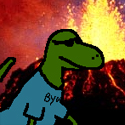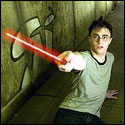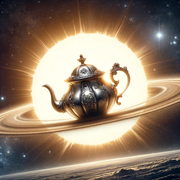|
Some new stuff from me, though nothing amazing as I've been mostly getting to grips with my new mount over the last couple of months. M106 & NGC4217 in the constellation Canes Venatici 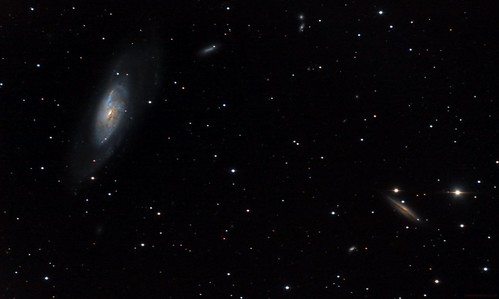 The western veil nebula (ngc6960), not enough data yet for anything really good, but it's a start.  Click here for the full 1000x611 image.
|
|
|
|

|
| # ? Apr 29, 2024 06:21 |
|
Does anyone here have experience with LightBuckets. I was thinking about buying some points and giving them a shot.
|
|
|
|
Jekub posted:Some new stuff from me, though nothing amazing as I've been mostly getting to grips with my new mount over the last couple of months.
|
|
|
|
Oh hey this thread is back to the first page. Good good. Jekub, those are incredible pictures.. I wish I still worked at an observatory so I could get shots like that. but anyway here's my humble offering. The Moon from last night!
|
|
|
|
Thanks for the comments, I'll be out for my second night of imaging on the North American nebula tonight, it's an object that I was never able to observe visually but photographically it's coming out really well. Fun imaging in the plane of the milky way to, my stacking software was reporting around 10,000 stars in the image. I did a late spring messier marathon a couple of weeks back, a whole night of actually looking through my scope with no camera to be seen. I think the total was 97 objects confirmed in the end, not a bad tally for our location. It's real easy to get tired of looking at faint fuzzy blobs though. Funkysauce Sorry, I've never used a remote telescope, though a friend of mine has to good effect and it's something I would definitely like to try, so if you do it please let us know how it works out? Crusty_mabiba Nice picture, that drat Moon is causing me all kinds of issues, to bright for those of us who don't get to image in narrowband. What's your setup and is that a single frame or a stack?
|
|
|
|
Just a single picture of the moon. Right now I have a 5" celestron omni XLT. CG-4 equitorial mount (with motor.) On that moon shot I was using a focal reducer/corrector. Not that it was useful or did... anything really, for a moon shot, but I just got it last week and wanted to see how a quick image would come out. I really like it and the wider field is amazing. The camera is a Nikon D40. Hopefully I can post some more stuff soon. It's been so lovely here (Boston) and if its not raining, it's just crappy light conditions unless I travel south a bit. So I haven't been able to get out lately. I've got a ton of pictures that need stacking too and I'm just lazy I guess..
|
|
|
|
Don't worry, it's something to do on long cold rainy weekends during the winter, or in my case when I'm trying to avoid the inlaws, like so : The North American Nebula  an emission nebula in cygnus and my focus for the last couple of nights, I'm pretty happy with the results. an emission nebula in cygnus and my focus for the last couple of nights, I'm pretty happy with the results. Imaging Kit : William Optics ZS66SD Refractor / Canon EOS1000D (unmodified) / Astronomik CLS CCD Filter 285 minutes total exposure time (57x5 minutes)
|
|
|
|
I'm really jealous of you guys with all the money to blow on good equipment. I'm pretty much limited to staring up with the naked eye since I have literally zero money to spend on anything. Are there any actual astronomer goons? I've seriously been considering it as my career once I get out of high school and finish my military time. I'd be great to talk to someone working in the field. e:Actually now that I think about it, maybe I could scrounge up 30 bucks to get those binocs in the op Lord Solitare fucked around with this message at 07:19 on May 24, 2010 |
|
|
|
Can someone enlighten me to some finer details of Astrophotography? I've been reading various newbie tutorials and looking at people's rigs, but there's some information missing in a lot of them. How important is automated tracking in something like this? I'm looking at the previously posted XLT 127 with the CG-4 Equatorial Mount. If I'm planning on trying to (eventually) take pictures of nebulae and galaxies, do I need some sort of a system to automatically track the mount as time goes on, or is it enough to manually tweak it at set intervals and let the interlacing software match things up? I've seen some pictures of rigs with a lot of wiring plugged into a laptop that I'm assuming is controlling this, but there's very little discussion of it. I'm not planning on jumping right into Astrophotography, but it's where I'd like to end up, so I want to make sure whatever I buy will lead to that after I've gotten some good old fashioned visual scoping done. Can anyone recommend a good book or online article that'll go over such things?
|
|
|
|
Mortanis posted:Can someone enlighten me to some finer details of Astrophotography? Have a look here, I've found it covers most of the questions anyone wanting to get started will have. But to give you some quick answers : How important is automated tracking in something like this? A mount tracks by by being aligned with the earths rotation, the better aligned, the more accurate it will track. However a mount is also mechanical and will never be perfect and neither will most peoples alignment. If your doing very widefield imaging, say with a standard DSLR lens then a good polar alignment on a tracking mount will let you do reasonable length exposures, but the more you zoom in the more your mechanical and alignment errors creep in. We overcome these errors in two ways. First we use mounts that support periodic error correction, where we can record the mechanical error in the mount and adjust the tracking to compensate for it. What we are doing is recording the error in the drive, which repeats over a fixed period (hopefully). Second we use autoguiding, where a second image is recorded, either by using a second scope and camera or using a device to take some of the light from the main scope. This second image looks at a bright star and software corrects the mounts tracking to ensure it remains perfect. Basically if you want to take good pictures of deep space objects your going to want to expose for reasonable lengths of time, anything over a couple of minutes at the image scale of my large scope, then we need to use the above techniques, which means we need a mount that supports permanent PEC and autoguiding. I've seen some pictures of rigs with a lot of wiring plugged into a laptop that I'm assuming is controlling this Yep, I have on my setup : Mount - Power, computer connection, autoguider DSLR - Power, USB Guide camera - USB, exposure control Scope - Fan So eight cables in all for me to take a picture. Other people make have more for such things as computer controller focuser and filter wheels, but that's getting way advanced. The laptop runs the camera control, the autoguiding and stellarium which I normally turn off once I have the scope where I want it. I want to make sure whatever I buy will lead to that after I've gotten some good old fashioned visual scoping done. If your just doing visual to start with then don't worry about imaging stuff, get a nice dob and start saving! Jekub fucked around with this message at 10:10 on May 24, 2010 |
|
|
|
Here is a HD video of the Moon I made last night. http://www.flickr.com/photos/tom_rintjema/4635583042/ Edit: And a photo!  I got a new lens that's very good. This picture is worth looking at in detail. TomR fucked around with this message at 14:31 on May 24, 2010 |
|
|
|
Lord Solitare posted:I'm really jealous of you guys with all the money to blow on good equipment. I'm pretty much limited to staring up with the naked eye since I have literally zero money to spend on anything. Well I'm not quite there yet, but getting there. Just graduated with my B.S. in physics. I ran my schools observatory for a few years, and hope to get into a grad school soon enough. I've done amateur stuff for a while now too, so I might be able to answer something if you're interested in the perspective of someone trying to get there as well. Also, yeah, there's no way around it, it's a goddamn expensive hobby. I spent a butt ton of money on my stuff, and it's not even really great equipment. Just middle of the road. It has to be a passion I guess, because it really is a big investment. Like a new car kind of investment sometimes, but totally worth it if you love it.
|
|
|
|
Jekub posted:Have a look here, I've found it covers most of the questions anyone wanting to get started will have. Very much appreciated on the responses!
|
|
|
|
I was out as well with my new 125mm scope. Seeing that the moon just totally drowns everything out got me thinking about filters. I know just a moon filter would help but does anyone have any opinions on filters such as noise pollution or any others for that matter? I can see Saturn, Mars and Venus but do not see any detail at all. Also I have a very hard time trying to focus anything when I barlow my 9mm. Is this to high of a magnification? I would think it should be fine but no go.
|
|
|
|
micron posted:I was out as well with my new 125mm scope. Seeing that the moon just totally drowns everything out got me thinking about filters. I know just a moon filter would help but does anyone have any opinions on filters such as noise pollution or any others for that matter? I can see Saturn, Mars and Venus but do not see any detail at all. I can't say much about specific brands of filters or anything; they're all kind of the same, but light filters (Narrow/Broad band filters and the like) are good for looking at and taking pictures of nebulae and so forth, but aren't really helpful for any planets or the moon. Regular color filters, and a moon filter will do for that. A standard set of 4-5 basic color filters should only be about 50-100 bucks and will give you everything you need for solar system stuff. Specialty things like narrow-band filters, polarizing, H-alpha, etc, usually cost more, like 100-200 a piece. And yes that is too much for a barlow with a scope that size. Especially if you are in an area where you're having issues with light pollution. The atmosphere will be too shaky to resolve anything. Maaaaybe on a clear, good "seeing" night you might be able to get something, but it will be rare.
|
|
|
|
Crusty_mabiba posted:I can't say much about specific brands of filters or anything; they're all kind of the same, but light filters (Narrow/Broad band filters and the like) are good for looking at and taking pictures of nebulae and so forth, but aren't really helpful for any planets or the moon. Regular color filters, and a moon filter will do for that. My location is orange and almost bordering yellow on the light pollution map. I bought but haven't used a standard filter set. We'll see how it goes I guess. I'm interested in taking some simple photos and wondering if something like a meade webcam would be worth while. Or should I instead get the adapter for a cannon xti DSLR that I own now. Its about the same cost at around 50 bucks and wonder which would provide better and easier results.
|
|
|
|
micron posted:I'm interested in taking some simple photos and wondering if something like a meade webcam would be worth while. Or should I instead get the adapter for a cannon xti DSLR that I own now. Its about the same cost at around 50 bucks and wonder which would provide better and easier results. Webcams are useful for getting started with planetary or lunar imaging, your DSLR is handy for long exposure wide field or deep space work provided your have adequate tracking. The link I posted further up the page should help your get a better understanding of what each discipline entails and requires.
|
|
|
|
I want to make sure I'm doing this correctly. I have a Celestron NexStar 130SLT telescope that I received as a gift. I also own a Canon 5D Mark II DSLR. I visited B&H's megastore and told this to the clerk, who then set me up with the T-Ring adapter and the T-Adapter. I see nothing when everything is hooked up. Reading this article at the bottom it mentions something about an eyepiece including the Barlow lens. I found this version with the attached Barlow lens. I want to make sure that this is what I need to purchase to see things out of my setup before I actually put any more money into this. I'd hate to keep buying the wrong things and not know why this isn't working.
|
|
|
|
Aericina: That should be all you need for connecting the camera. That's basically the same way mine is setup, but with a Nikon D5000 now. If nothing is showing up on the screen though, try focusing through the viewfinder first, preferably on a really bright star, then fine tune it with the live view screen. If focusing isn't the problem, I have no idea what it would be. Those adapters should be all you need. Also, I don't know about using a Barlow. I've never tried, and I don't see why it wouldn't work, but you don't need it for anything. On another note, last night was the first clear night in a week or so. I was out 'till about 3am. I was mostly just observing, but took some photos at the end of the night. Really awesome night. Here's a close up of M57, The Ring Nebula,  Click here for the full 1000x686 image. Taken from a wide field shot,  Click here for the full 1000x665 image. And M13, The Hercules Globular Cluster  Click here for the full 717x621 image.
|
|
|
|
The problem I'm having is that I can't seem to get within focus range when everything's connected. I can see light, but it just can't focus on anything at all, either through the viewfinder or through LiveView. At the bottom of that little instruction manual it mentions the focal plane on some cameras may not be reachable and to use the Barlow. Otherwise I currently have a bunch of expensive equipment that doesn't work together.
|
|
|
|
I was just going to say that you are probably short of in-focus. With my reflector I swapped out the focuser for a low profile model or I would never have been able to rack it in far enough to reach focus. I would try and avoid using a barlow if possible, it will only make life more difficult in the long run as your drift and tracking inaccuracy will be more of a problem. This is not a problem for video imaging but long exposures will suffer. Your options then are to replace the focuser with a low profile model, or move your primary mirror further up the tube. That would probably be my preference, check this forum post of how one guy managed it http://www.cloudynights.com/ubbarchive/showflat.php/Cat/0/Number/2081585/page/6/view/collapsed/sb/7/o/all/fpart/1 The secondary it seems is still large enough with the mirror shifted to fully illuminate the chip on the camera, but you will probably notice an increase in vignetting. Also if you do that make sure you have the tools to re-collimate your telescope after, which you should have anyway. Jekub fucked around with this message at 09:24 on Jun 9, 2010 |
|
|
|
Thanks, I'll check that out. A quick search gives me a collimation eyepiece, is this what I need or something different/additional?
|
|
|
|
A laser collimator is the more modern method for collimating and will suffice for most needs, much easier than using a Cheshire eyepiece collimator in most cases. The only issue with the laser is that you have to make sure that the laser itself is also collimated. Obviously if the laser points off centre then your alignment will also be off centre. However they are adjustable, just put it in something to hold it steady, pointed at a wall 10ft away of so, rotate it and check the the red dot doesn't turn circles. It cannot really be underestimated how important good collimation is to a newtonian reflector, both for visual and imaging, it's a fundamental requirement for the design and you will never get the best from your telescope without it.
|
|
|
|
Oh, and step 3 for really pimped-out imaging: Adaptive Optics. 
|
|
|
|
Well, it's not that far off, SBig do an adaptive optics add-on for there dedicated astronomy cameras which isn't horribly expensive, at least not when compared to the cost of the cameras it works with.
|
|
|
|
I'm saving up for my first telescope, which will most likely be a Meade ATX-90TC. So far this thread is amazing with what everyone is doing. Oh and to the poster ealier in the thread that wanted an astrolabe, go here. Main Site: http://www.astrolabes.org/ Personal Astrolabe buying link: http://www.astrolabes.org/personal.htm They have a link where you you can buy a recreated astrolabe, it is on my to get list, so if anyone gets one before I do, let me know how it turns out!
|
|
|
|
I was wondering if you guys could help me out, I seem to have a little problem. I'm new to astronomy and bought my first telescope recently. I purchased a Celestron Astromaster 114. I can use it I can view the moon alright but when I aim it at the stars all I see is black with both my 10mm and 20mm eyepieces. Shouldn't I at least be seeing the visable stars?
Spoot fucked around with this message at 03:35 on Jun 12, 2010 |
|
|
|
Is anybody planning on taking pictures of comet McNaught?
|
|
|
|
Spoot posted:I was wondering if you guys could help me out, I seem to have a little problem. I'm new to astronomy and bought my first telescope recently. I purchased a Celestron Astromaster 114. I can use it I can view the moon alright but when I aim it at the stars all I see is black with both my 10mm and 20mm eyepieces. Shouldn't I at least be seeing the visable stars? No. Stars are so far away that they will not look any different no matter how much you magnify them. However, you'll be able to see more of them than with the naked eye, so enjoy clusters! 
|
|
|
|
Spoot posted:I can use it I can view the moon alright but when I aim it at the stars all I see is black with both my 10mm and 20mm eyepieces. Shouldn't I at least be seeing the visable stars? You should definitely be seeing something, get you finder lined up and point the scope towards the brightest star you can see to test, there is no reason that you should not be seeing stars. If you point anywhere in the milky way you should no end of stars. upsciLLion posted:Is anybody planning on taking pictures of comet McNaught? I'd love to, please make the clouds go away 
|
|
|
|
upsciLLion posted:Is anybody planning on taking pictures of comet McNaught? I wanted to but sadly... 
|
|
|
|
Spoot posted:I was wondering if you guys could help me out, I seem to have a little problem. I'm new to astronomy and bought my first telescope recently. I purchased a Celestron Astromaster 114. I can use it I can view the moon alright but when I aim it at the stars all I see is black with both my 10mm and 20mm eyepieces. Shouldn't I at least be seeing the visable stars? When you say you can view the moon alright, is it fuzzy or sharp? It's possible your collimation is out of whack, which can cause you to have problems resolving stars as a pinpoint of light.
|
|
|
|
Loztblaz posted:When you say you can view the moon alright, is it fuzzy or sharp? It's possible your collimation is out of whack, which can cause you to have problems resolving stars as a pinpoint of light. I'll have to double check on the first clear night. You're probably right about the collimation problem.
|
|
|
|
I just saw this thread for the first time and thought I'd brag. I just got back from Texas Star Party a few weeks ago. There, I took this: I also bought one of these: 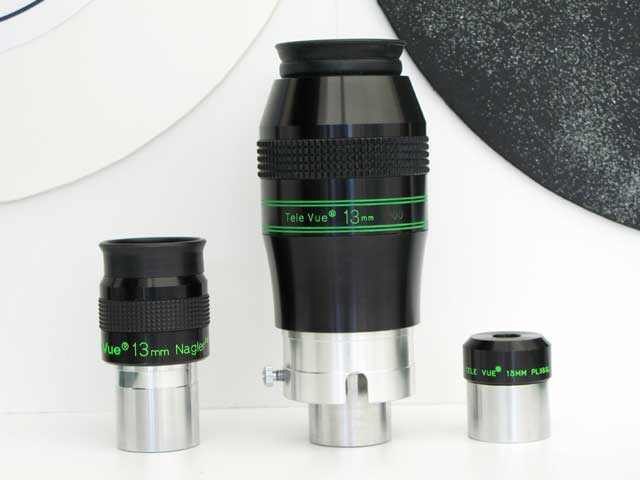
|
|
|
|
oldmanklc posted:I just saw this thread for the first time and thought I'd brag. I just got back from Texas Star Party a few weeks ago. There, I took this: Very nice, great colours. What scope were you using for that? Those diffraction spikes are very sharp, I'm going to need a new spider once I get back to imaging with the newt, the two vane spider in mine makes horrible spikes. DSLR or dedicated astro camera? I also see you have a thread in ask / tell which I'll keep an eye on and join in with if you want, you might want to drop some of your images in it to encourage some questions.
|
|
|
|
Got an unexpected little break in the clouds last night. Managed to get about 30 minutes on M27 before the sun came up. also, nice picture oldmanklc! definitely worth bragging. should post some more for sure. Crusty_mabiba fucked around with this message at 20:12 on Jun 15, 2010 |
|
|
|
Nice one Crusty_mabiba, it's always nice to make progress. Are you taking flat frames yet? It would do wonders for removing that vignetting. Also are you using a reflector or a refractor?
|
|
|
|
Double post, ignore that.
|
|
|
|
Thanks! Since I got my new camera, my pictures have been improving. It's been pretty encouraging finally getting some good detail in nebulae, galaxies, etc. I just have to find a less light polluted area now. and, no I have not been doing flat frames. That's my next project though. I'm trying to put together a light box out of a lot of cardboard boxes. I'm using a Schmidt–Cassegrain with a field flattener, so yeah, the vignetting and distortion is kind of bad towards the edges, but hopefully I can get something working soon. Also, I have read a lot of different opinions online about how many flat frames to take for one session. Some say just as many flat as light frames, and some say just about 20-30 will do. Any ideas on how many would it take to correct something like my photo above?
|
|
|
|

|
| # ? Apr 29, 2024 06:21 |
|
A widefiled of the Cygnus loop (veil nebula) from last night. You'll recognise NGC6960 on the right from my other image at the top of the page. That one was taken with my 250mm reflector, this one with my 66mm refractor.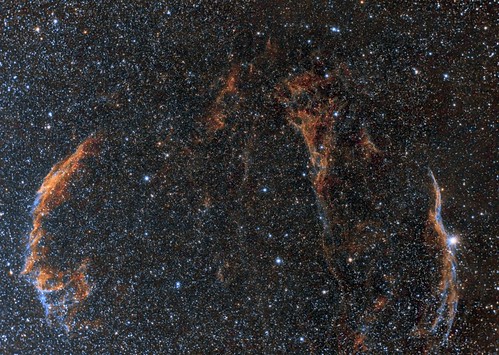 40 x 5 minute exposures, 200 minutes total. quote:Any ideas on how many would it take to correct something like my photo above? I normally take 21 or 31 flat frames, they are only short exposures so taking lots of them isn't a hassle. Just remember that they have to be taken with the camera mounted in the telescope exactly as it was when you took your images, don't move it even a millimeter. I normally count 21 as a good number for all my calibration frames, though on the image above I took 31. The odd number is to work better with median stacks.
|
|
|






